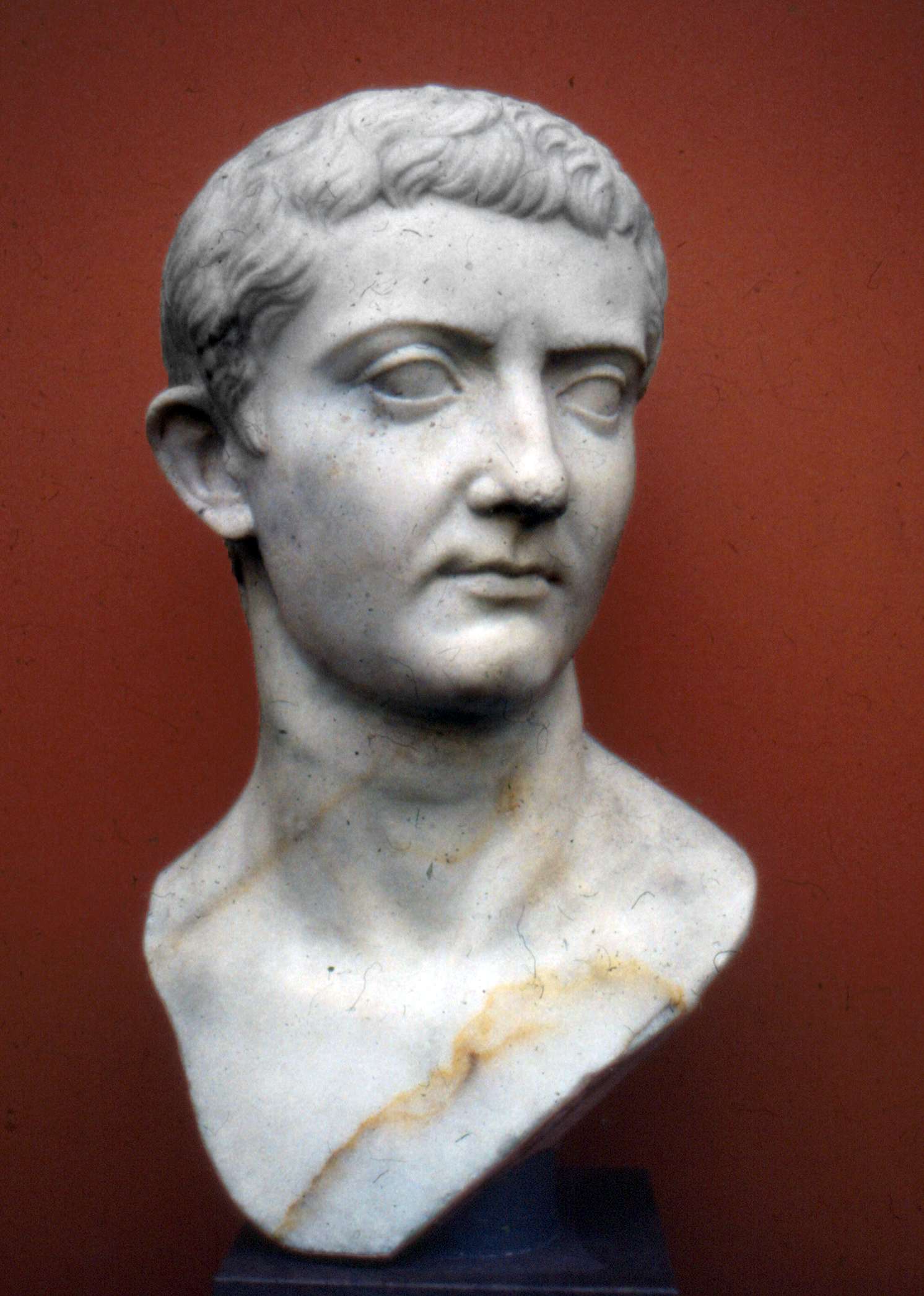Pontius Pilate, Latin in full Marcus Pontius Pilatus, (died after 36 ce), Roman prefect (governor) of Judaea (26–36 ce) under the emperor Tiberius who presided at the trial of Jesus and gave the order for his crucifixion.
Roman Emperors in the New Testament
Several Roman emperors are mentioned in the New Testament, although not all of them are named in the text.
Augustus (Octavian) Caesar
Caesar Augustus was the Roman emperor at the time of Jesus’s birth in c.5 or 6BC. Luke tells us, “At that time, Augustus Caesar sent an order that all people in the countries under Roman rule must list their names in a register” (Luke 2:1) Octavian was the adopted son of Julius Caesar, who had been assassinated in 44BC. He became the undisputed and sole emperor after defeating Mark Antony (after whom the Antonia Fortress in Jerusalem was named) and Cleopatra (the Queen of Egypt) at the maritime Battle of Actium in 31BC.
In 27BC, Octavian was honoured by the Roman Senate with the title ‘Augustus’, meaning ‘revered’ or ‘more than human’. When Herod the Great built a new port city on the site of Strato’s Tower in c.21BC, he named it Caesarea Maritima, in honour of Caesar Augustus. Paul was held for two years at Herod’s Palace in Caesarea between 57 and 59AD (see Acts 23:35 & 24:27 and Map 26).
Roman harbour at Caesarea
Roman harbour at Caesarea Maritima
Tiberius Caesar
When Augustus died in 14AD, he was succeeded by his son Tiberius. Luke tells us that John the Baptist began preaching during the fifteenth year of the reign of Tiberius Caesar (in 26/27AD) (see Luke 3:1-2). Herod Antipas (who imprisoned and beheaded John the Baptist in 28AD for criticising his marriage (see Mark 6:14-28) named his new capital Tiberias in honour of Tiberius (see Map 7).
Tiberius was followed in 37AD by his great-nephew Gaius, called Caligula because of the little boots he wore as a child. Caligula was popular at first, but after an illness upset his mental stability, he embarked on a reign of terror.
Claudius
He was succeeded in 41AD by his uncle, Claudius, who invaded Britain in 43AD. Claudius was the emperor in 44AD at the time of the famine that prompted Saul and Barnabas to take a gift from the church in Antioch to the Christians in Jerusalem (see Acts 11:27-30 and 4 on Map 22). In 49AD, Claudius expelled all the Jews from Rome. According to the Roman historian Tacitus, this was because the Jews were always fighting about ‘Christos’ – a reference to the ongoing conflict between Jewish Christians (such as Aquila and Priscilla) and traditional Othodox Jews.
The Colosseum, Rome
The Colisseum amphitheatre in Rome
Nero
Claudius was followed by his 17-year-old stepson Nero in 54AD. Paul appealed to the Emperor Nero in 57AD (see Acts 25:11) and was subsequently acquitted after a hearing before the emperor in c.62AD. Nero later became a brutal psychopath, blaming Christians for the Great Fire of Rome in 64AD and sending them to their death in the amphitheatre. Both Paul and Peter were executed by Nero shortly after the outbreak of the Romano-Jewish War in 66AD, when anti-Jewish frenzy was at its height.
Vespasian
Nero committed suicide in 68AD and (after a year of three unsuccessful claimants) was succeeded by Vespasian, who returned from active service in Judaea in 69AD to take up the reigns of power.
Titus
Ten years later, in 79AD, Vespasian was succeeded by his son Titus, who had destroyed the Temple in Jerusalem at the end of the Jewish War in 70AD.
Titus’s Arch, Rome
Images on Titus’s Arch showing the looting of the Temple in 70AD
Domitian
Titus died suddenly in 81AD and was followed by his younger brother Domitian, who continued to persecute Christians because they wouldn’t worship the Roman gods or sacrifice to the Emperor (and were therefore considered to be ‘godless atheists’ who would arouse the fury of the Roman gods). It was Domitian who ordered the exile of the apostle John to the Aegean island of Patmos in c.89AD (see Revelation 1:9 and Map 29). Domitian was assassinated in 96AD and was followed by Nerva (96-98AD) and Trajan, Nerva’s adopted son.
Hadrian
Hadrian’s Temple, Ephesus
Trajan was succeeded in 117AD by Hadrian who visited Britain in 122AD and built the 76 mile / 122 km long Hadrian’s Wall to keep the ‘barbaric’ northern British tribes out of the ‘civilised’ Roman south. In 130AD, Publius Aelias Hadrian embarked on a grand tour of the empire and arrived in Jerusalem. The Jewish inhabitants asked Hadrian to allow them to rebuild the Jewish Temple. Instead, he established a Roman ‘colonia’ (a military colony) in Jerusalem, built a temple to Jupiter (Jove), and renamed the city Aelia Capitolina (‘the city dedicated to the worship of Hadrian and the Capitoline god Jupiter’).
Hadrian’s Temple, Ephesus
Circumcision and the religious practices of Judaism were outlawed, and Jews were barred from entering Jerusalem. This led to the Jewish Revolt of 132AD, led by Simon Bar Kochbah.
Jesus and Caesar by Warren Carter
Q. The Gospels mention Caesar many times. It is clear that Jesus knew who Caesar was and the power that he held. But did Caesar know of Jesus? Did he ever hear about him or the giant movement that he had created?
A. Correct: Jesus knew who Caesar was. But there is no evidence that Tiberius—the emperor from 14-37 C.E. when Jesus was active—knew about Jesus. Nor is it likely that he would. While the Gospels present Jesus as having a big impact on crowds, Galilee and Judea were far from Rome and of limited significance in the larger empire. And governor Pilate did not need to clear a crucifixion with the boss in Rome before proceeding.
The Gospels actually do not refer specifically to the emperor very often. The “paying the tax to Caesar” scene accounts for two thirds of the references to the emperor (12 times total: Matt 22:15-22; Mark 12:13-17; Luke 20:20-26). Luke 2:1 refers to a census authorized by the emperor Augustus (though it’s doubtful there was such a census). Luke 3:1 mentions the emperor Tiberius to locate John the Baptist’s ministry. The remaining four references occur during the accounts of Jesus’ death. Jesus is charged with forbidding the payment of taxes to the emperor (Luke 23:2). In John 19:12-15, the chief priests tell Pilate he is no friend of the emperor if he releases Jesus and then they declare: “we have no king but the emperor.”
While there aren’t many references to the emperor in the Gospels, they do evoke the presence and impact of the empire in lots of other ways including personnel (soldiers, tax-collectors, landowners, slaves, governors etc.) and social experiences (poverty, hunger, disease etc.).
Some later Roman writers suggest that several emperors came to know about Jesus and his followers long after his activity. Governor Pliny receives reports about Jesus-followers and writes to the emperor Trajan about what to do with them around 111-112 C.E. And Tacitus (writing around 115-117 C.E.) narrates that the emperor Nero blamed Jesus-followers for the fire in Rome in 64 C.E. Tacitus says Nero punished many, but he overstates the situation (to make Nero look bad) as there weren’t huge numbers of Jesus-followers in the 60s.
Warren Carter, “Jesus and Caesar”, n.p. [cited 1 Aug 2021]. Online: https://www.bibleodyssey.org:443/en/tools/ask-a-scholar/jesus-and-caesar




